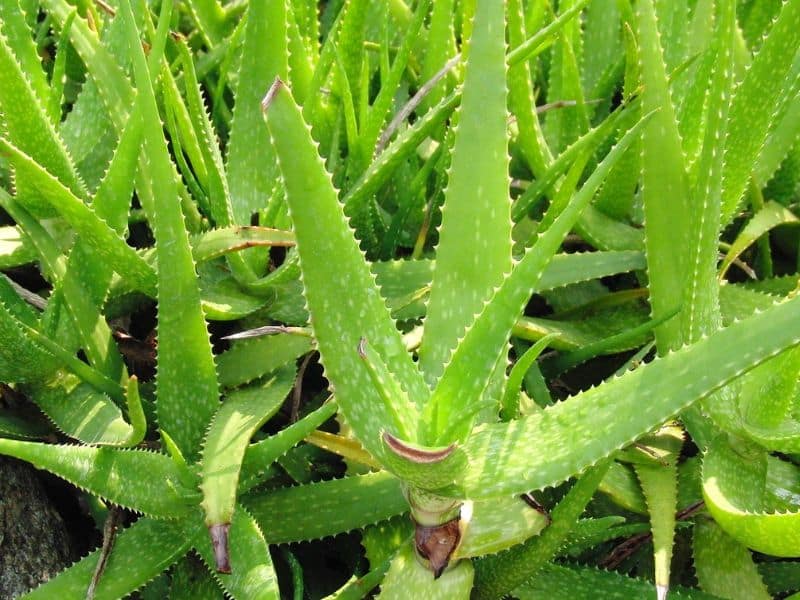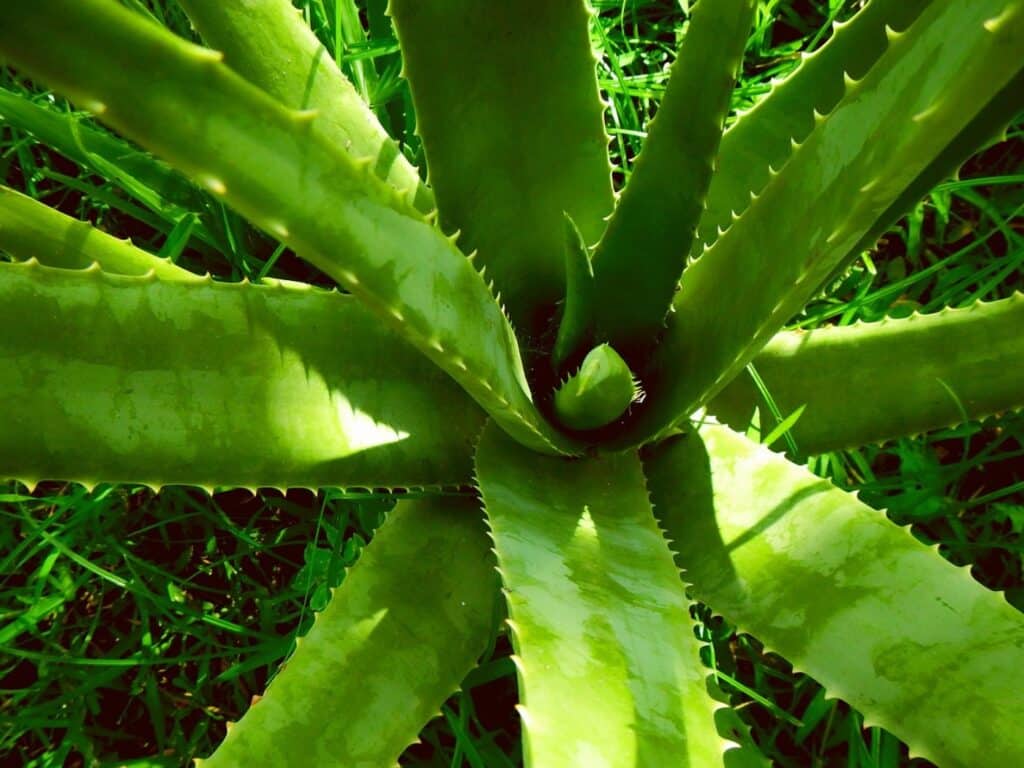Discovering your aloe plant’s leaves turning soft and yellow can be disheartening, especially when you’ve been diligently watering it, thinking you’re providing the best care.
Overwatering, however, is a common misstep many plant enthusiasts face, leading to an array of issues that can jeopardize your plant’s health. It’s a tricky balance to maintain, as these resilient succulents demand minimal but precise attention to thrive.
Understanding the signs of overwatering and the steps to rescue your aloe plant is crucial. This article aims to guide you through identifying the symptoms, understanding the causes, and implementing effective solutions to revive your overwatered aloe.
With the right approach, you can restore its vigor, ensuring it continues to adorn your space with its lush, green splendor. Let’s dive into the essentials of nurturing your aloe plant back to health, turning a common oversight into a valuable learning experience.
Recognizing an Overwatered Aloe Plant
Signs and Symptoms
Identifying an overwatered aloe plant starts with spotting telltale signs that scream “too much love.” First up, soft, mushy leaves are a dead giveaway. Unlike the firm, plump leaves of a healthy aloe, overwatered ones feel weak and can easily bend or break.
Next, look out for discoloration. Leaves turning yellow or brown indicate stress from excessive water. Root rot, characterized by dark, mushy roots, is a more severe symptom and suggests your plant has been swimming rather than sipping.
Comparing Healthy and Stressed Aloe Plants
Understanding the difference between thriving and struggling aloe plants can save you a lot of headaches. Healthy aloe plants boast vibrant green, firm leaves that stand upright, exuding vitality.
In contrast, stressed, overwatered aloes display a sad droopiness, with leaves that often feel spongy and look discolored. Recognizing these differences ensures you can act swiftly, adjusting care to bring back the lush, green charm of your aloe.
Consequences of Overwatering Aloe

Overwatering your aloe plant may well seem like a kind gesture, but it’s a one-way ticket to trouble town for this desert dweller. Let’s dive into the messy aftermath of too much love in the form of water and how it wreaks havoc on your green buddy.
Root Rot in Aloe Plants
The first casualty in the overwatering saga is the root system. Root rot, a result of excessive moisture, turns the once strong and healthy roots into a mushy, decaying mess.
This happens because aloe roots, which are built for dry conditions, simply can’t handle the pool party you’ve thrown for them. If your plant’s roots have gone to mush, it’s like trying to run a marathon on a broken leg – not much progress can be made.
The Impact on Growth and Health
Overwatered aloe doesn’t just stop at the roots; it goes full domino effect on your plant’s growth and health. Think of it as your aloe plant trying to survive on a diet solely of water – eventually, it’s going to show signs of stress.
The once vibrant and sturdy leaves turn soft, yellow, and with less of the aloes’ signature perkiness. In a nutshell, too much water deprives the plant of oxygen, leading to a compromised immune system and making it easy pickings for diseases.
Remember, understanding aloe care is less about perfecting a green thumb and more about mimicking its natural, arid home. Keeping your aloe plant on a desert-like watering schedule ensures that your green friend stays happy, healthy, and far from drowning.
Steps to Rescue an Overwatered Aloe Plant
Having realized the consequences of overwatering your aloe plant, including potential root rot, it’s critical to act quickly. This section outlines the necessary steps to revive your plant, reflecting the previous discussion about the importance of proper care.
Assessing the Damage
First off, take a good look at your plant. If the leaves are soft, wilted, or discolored, you’ve got some work to do. Gently remove the plant from its pot to check the roots.
Healthy roots should be white and firm, so any that are brown and mushy indicate trouble. Snip away the damaged parts with clean, sharp scissors. It sounds harsh, but it’s akin to cutting off split ends; it gives the plant a fresh start.
Repotting with Proper Drainage
Grab a pot with good drainage holes – think of it as your plant’s lifeline. Opt for a fast-draining soil mix specifically designed for succulents. This step mimics the aloe’s natural desert habitat, preventing water from hanging around too long and causing issues.
When repotting, handle your plant as if it’s a priceless artifact; those roots have been through enough already. Place the plant in the new pot and lightly pack the soil around it, ensuring it stands firm and proud like it’s ready for a comeback.
Watering Best Practices After Overwatering
Here’s the deal: your aloe doesn’t need a daily drink. Wait until the soil is completely dry before you even consider watering again. This may well mean checking the soil more than you check your social media notifications.
When you do water, do so thoroughly, ensuring water flows out of the drainage holes. Think of this as a spa day for your plant; it’s a chance to fully rehydrate without going overboard.
Remember, an aloe plant is more resilient than it looks. With these steps, you’re not just saving a plant; you’re mastering the art of aloe care. Your green friend will thank you – not in words, of course, but in lush, healthy growth.
Preventing Future Overwatering
Understanding Aloe Plant Water Requirements
Knowing how much water your aloe plant needs is crucial to prevent overwatering. Aloe plants store water in their leaves, making them highly efficient in dry environments. This means they require less frequent watering compared to other houseplants.
A good rule of thumb is to water your aloe plant deeply but infrequently, allowing the soil to dry out completely between waterings. During winter months, reduce watering further as the plant enters a dormant phase.
The Role of Soil and Pot Selection
Choosing the right soil and pot plays a pivotal role in preventing overwatering. Aloe plants thrive in well-draining soil mixtures, often labeled as “cactus mix” or “succulent mix” at gardening centers. These mixes prevent water from pooling at the roots, which can lead to rot.
Similarly, pots with drainage holes are non-negotiable. They allow excess water to escape, preventing water from accumulating at the bottom and reducing the risk of overwatering. Consider pots made of porous materials like terracotta, which naturally wick away moisture from the soil.
Monitoring Techniques
Monitoring your aloe plant regularly can help you catch and address overwatering signs before they escalate.
Feel the soil; if it’s wet to the touch a few inches below the surface, delay watering. Watching for visual cues, such as leaves that become discolored or overly soft, can also signal that it’s time to adjust your watering schedule.
Lastly, don’t forget to adjust your watering practices with seasonal changes. Your plant will need less water during the cooler, dormant months.
Up next:







